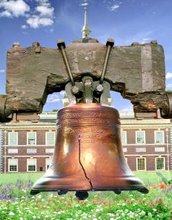Shortly after the United States entered World War I, the commander of U.S.
Convoy Operations was ordered to organize and begin escorting the American
Expeditionary Forces (AEF) to France. With the threat of enemy submarines,
American ships crossing the Atlantic needed protection. Four cruisers, 13
destroyers, two armed yachts, and two fuel tankers gathered in New York Harbor
in early June 1917 to serve as escorts. They would convoy 14 steamships and
three navy transports to France with cargoes of soldiers, material, draft
animals, and supplies. By the end of the war, more than 75 percent of American
troops passed through New York Harbor on their way to Europe.
In little time, the transport ships had been gathered, fitted for carrying
troops, equipped with radios, and armed. The United States even utilized German
ships that had been interned, or seized after the declaration of war. The
American government had to be flexible and efficient in order to get troops and
supplies into Europe quickly. By June 14 the ships were deemed ready to
sail.
The cruiser USS Seattle, and the destroyers USS Wilkes, Terry, Roe, and
later, the Fanning served as heavy escort to the USS Tenadores, Saratoga,
Havana, Pastores, and the DeKalb, a captured German armed merchantman.
(Merchantman is a name given to a ship, tanker, or freighter whose intended
purpose is the transportation of goods and supplies, not military troops). Their
orders sent them toward the port of Brest, France. Late at night on June 22,
torpedoes coursed through the convoy, narrowly missing several ships. Lt. T.
VanMetre of the destroyer USS Wilkes used early passive sonar to discern the
sounds of nearby U-boats. The ships scattered as planned and regrouped the
morning of the 23rd. Marines on the DeKalb were aware of the attack but some
soldiers missed the incident. A soldier of the First Division reported ?Daily
rumors spread that submarines were near, but no one saw them.? The Navy later
remarked on the incident to Congress.
On the afternoon of the 24th the convoy rendezvoused with additional American
destroyers stationed at Queenstown, Ireland. They escorted the ships toward
France, where French aircraft could be seen patrolling for submarines. Because
of U-boats off the port of Brest, they headed for Saint-Nazaire instead. The
crowded troop ships arrived safely, giving the soldiers, sailors and Marines a
great sense of relief.
On June 26th the landing began with Army stevedores going ashore to prepare
for unloading. Company K of the 28th Infantry Regiment was the first AEF
infantry unit to set foot in France. The rest of the 28th, and the 16th Infantry
Regiment also came ashore that day, as did part of the 5th Marine Regiment. It
was June 30th before the entire contingent could be brought ashore. Due to the
cramped port, it took stevedores assisted by Marines a few day to bring all
animals, materiel and supplies ashore.
First Units to Land at St. Nazaire in Order of Arrival:
16th Infantry Regiment
18th Infantry
Regiment
26th Infantry Regiment
28th Infantry
Regiment
5th Marine Regiment
Army Field
Hospital No. 13 Ambulance Company No.13
Company C 2nd Field Signal Battalion
The first units ashore marched three miles to Camp No. 1, a site hastily
constructed by German Prisoners of War. The mayor of Saint-Nazaire welcomed the
Americans, who awed the citizens of the small port town. Local French bands
played in honor of the Americans, and American regimental bands returned the
compliment. Shortly after arrival, the French requested that Americans march in
Paris on July 4 as a symbol of the United States? entry into the war. The 2nd
Battalion of the 16th Infantry Regiment received a rapturous welcome in Paris
from French citizens and government officials.
While less than an Army division of Americans had arrived in France by late
June 1917, this small installment began the mobilization of several million
American men and women. Many French ports were transformed to accommodate the
arriving waves of allied support. Many of the new docks, warehouses, roads, and
railroads were built by American engineer regiments. The U.S. Navy pioneered
modern antisubmarine warfare, convoy escort, and refueling of ships underway.
The scale and sophisticated organization of the effort amazed Americans and
Europeans alike. These millions of Americans with supplies and material became
the keystone of Allied victory in
1918.

